Technical SEO Checklist for Improved Website Visibility
Search engine optimization is competitive. Hundreds of websites are vying for the attention of your target audience in the search rankings. The top position in Google for a non-branded search term will get approximately 43% of the search traffic that clicks through to a website. By position 10, you are lucky to get 3% of the total search traffic.
To stand out, you need to get that pole position in organic searches. There are a lot of variables at play. Technical SEO is a part of the broader optimization strategy. In this guide, I’ll provide you with a technical SEO checklist you can use to improve your website’s visibility.
This technical SEO checklist is aimed at people with limited to medium knowledge of SEO. I’ve tried to share free, easily accessible tools and resources.
1. Use HTTPS
HTTPS (Hypertext Transfer Protocol Secure) encrypts your data. It ensures information can’t be modified or corrupted during transfer. You can check if a website has HTTPS enabled by looking at the URL or your browser.
In your browser, HTTPS is commonly designated using a padlock symbol. You’ll be able to see that on the Nightwatch website if you look up at the top left-hand corner of your screen. You can also check if HTTPS is enabled by looking at the website URL.
I’m sure you know what you’re looking for, but here it is, just in case.
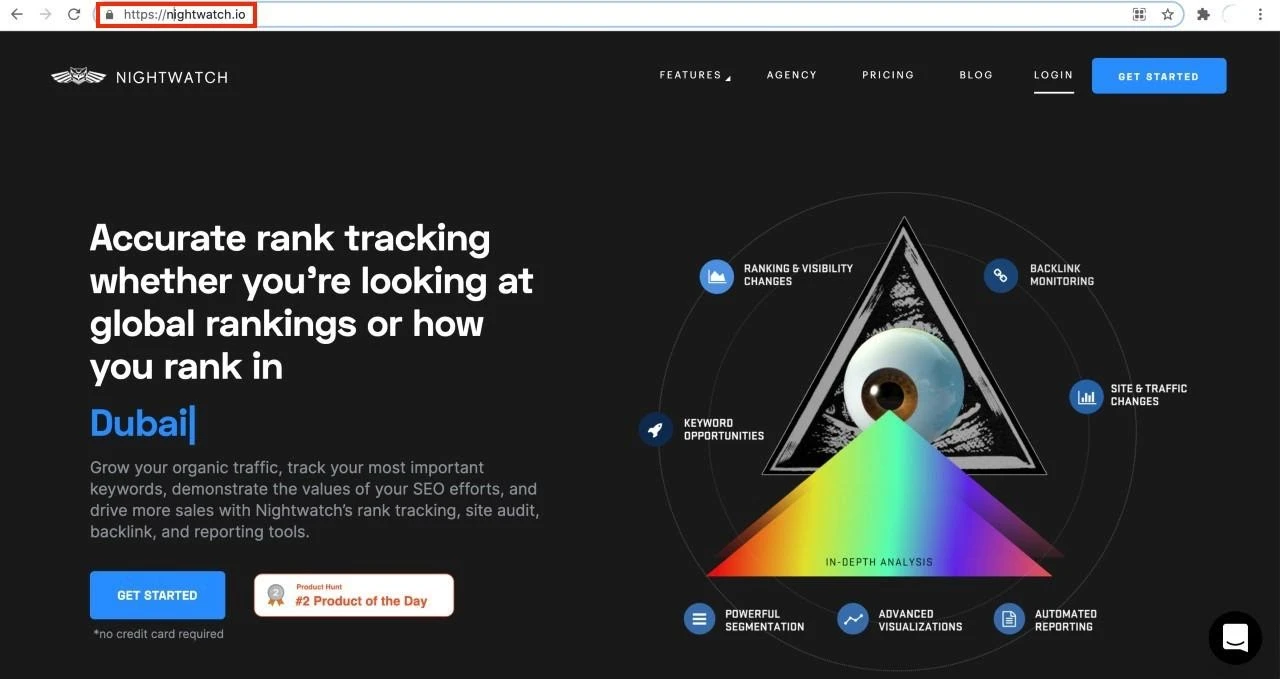
Digital security is important for consumers. For example, it would be foolish to send your credit card details over an unsecured server. You’re just asking a Nigerian Prince to rack up a big bill under your name.
Google has acknowledged that HTTPS is a ranking factor. Here’s what they have to say on the matter.
“We’re starting to use HTTPS as a ranking signal. For now it’s only a very lightweight signal — affecting fewer than 1% of global queries, and carrying less weight than other signals such as high-quality content — while we give webmasters time to switch to HTTPS. But over time, we may decide to strengthen it, because we’d like to encourage all website owners to switch from HTTP to HTTPS to keep everyone safe on the web.”
The bold font is from me. You can read a full excerpt here.
If you’re running an eCommerce website, HTTPS should be mandatory. Regardless of whether you happen to be in the eCommerce sector, I recommend setting up HTTPS.
Setting up HTTPS is straightforward and cheap. For example, a plugin like Really Simple SSL will automatically manage your redirects on WordPress. For added security and performance benefits, consider hosting your site with a dedicated IP, which helps prevent SSL conflicts and improves site trust.
2. Find Crawl Errors
Google “crawls” your content to index your website. Most of the time, when Google crawls your site, everything runs smoothly. Occasionally, the crawler will run into problems.
A site crawl is an important part of a website audit. You can use various tools to identify crawl issues. The most widely used free tool is undoubtedly Google Search Console. It’s pretty handy because Google points out issues the company has found.
You can access the crawl errors tab through the coverage Google Search Console dashboard.
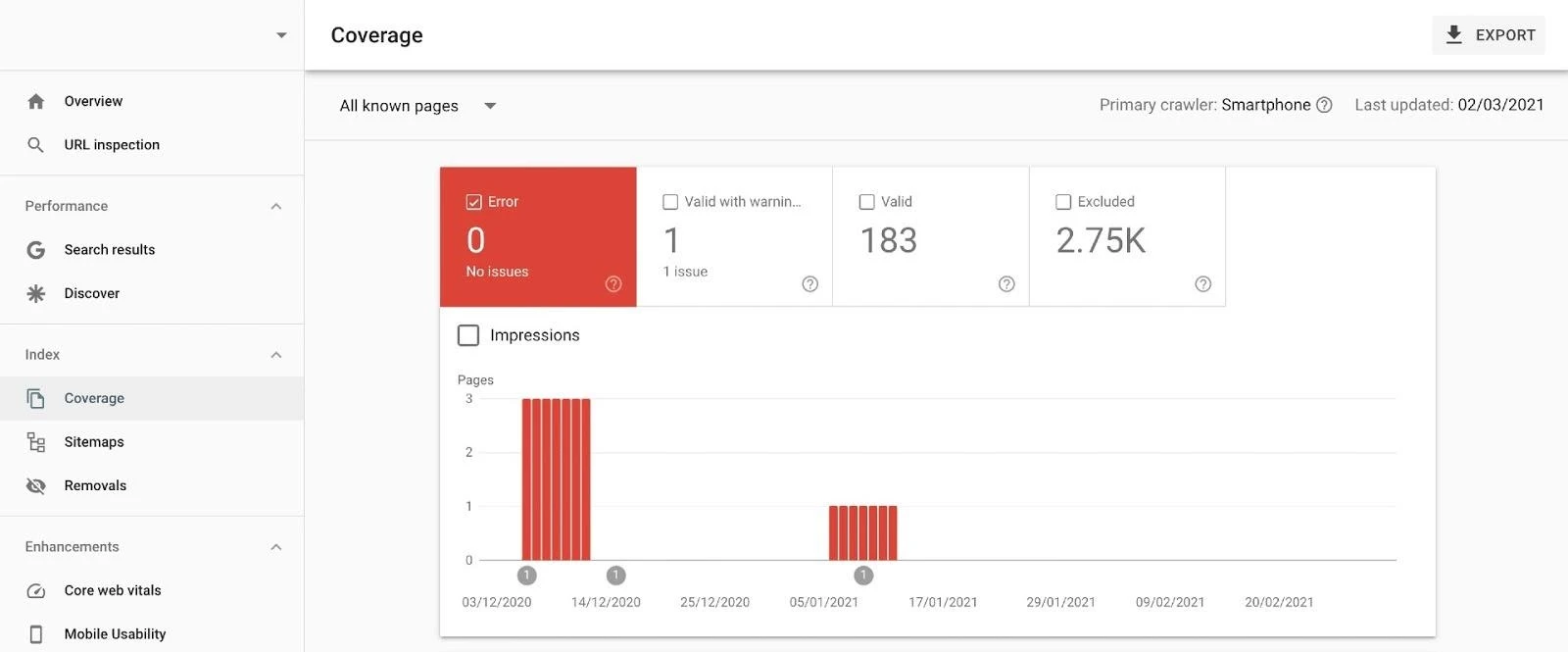
I recommend periodically checking the dashboard to identify potential issues.
Google typically divides crawl errors into two main categories - site errors and URL errors. Site errors indicate an inability to crawl and index your site. On the other hand, URL errors indicate page-specific issues.
Most of the time, Google Search Console works perfectly, and it’s pretty straightforward to fix a problem. Occasionally, Google will identify issues like a slow loading page. Sometimes these issues are caused by a dip in the speed of your service provider.
For example, if another website on your server suddenly deals with a lot of traffic, it will impact other sites’ load times on the same server. These issues can be temporary. However, they might be an indication of larger problems. If you’re experiencing slow page loading times, and it’s not an issue with your site, more on that later, it could be time to change hosting provider.
3. Fix Broken Outbound and Internal Links
Fixing broken links is an important part of your technical SEO checklist. You can have broken internal and outbound links on your site. When visitors click on these broken links, it takes them nowhere.
Broken links are frustrating for your visitors. Broken links can hamper your SEO efforts by breaking the flow of the potential buyer’s site journey. They also confuse Google crawlers that are trying to understand how your website is structured.
Thankfully, fixing broken links is straightforward.
You can find the details of broken links in your Site Audit report. Once you have the list, you can either update or remove broken internal links. One of the best tools for finding broken links is Google Analytics.
Log into Google Analytics and select “Behaviour,” then “Site Content,” and “All Pages.”

Select “Page Title” and enter “404” into the input field.
You can also use a crawler to identify broken links in much the same way that Google would encounter broken links. One of the most well-known website crawlers is Screaming Frog. However, it is a premium tool, and there is a steep learning curve.
You can also monitor external links pointing to your site using the Nightwatch Backlinks Monitor. For ideas on how to build external links, check out this roundup where 30 SEO experts share their best link building strategies.
4. Optimize Your URL & Website Structure
The URL is the name associated with a page of a website. There are various ways you can structure your URL. For example, one of the common parameters used is categories. So, you might have a URL that looks something like - mywebsite.com/category/blog-post-headline
Your URL structure helps people, and website crawlers, understand your website structure. You should try to ensure that you optimize your URLs so that it is SEO-friendly.
An SEO-centric URL should have the following characteristics:
- Be short and straightforward.
- Use hyphens and not underscores to separate the words.
- Include the focus keyword
I’d argue an SEO-friendly URL structure is more important for people than Google. Consider which of the following URL structures you’d find easier to remember:
- diggitymarketing.com/seo-tips
- diggitymarketing.com/seo-tips-you-can-implement-in-the-next-24-hours
Not having an optimized URL does not mean that Google will not mean your content won’t climb up the search rankings. I can provide plenty of examples of sites that don’t use an SEO-friendly URL structure.
For example, Search Engine Watch includes a date in the URL structure and the full headline of an article. The URL structure is not optimized for SEO.
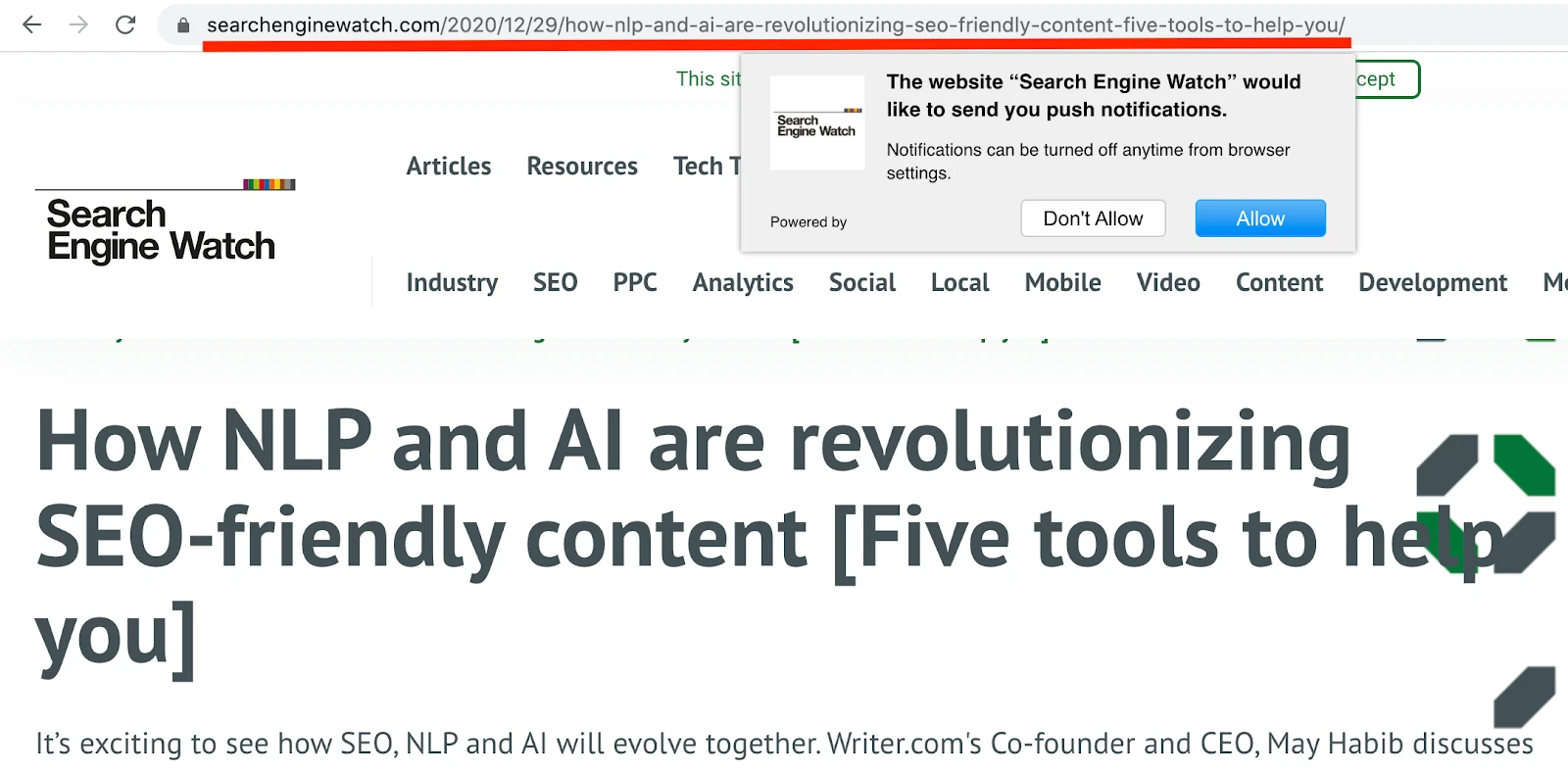
While the URL structure might be less critical than it used to be, how you structure your website is very important. A well-structured website should have content hubs.
Here is an example of a website with a well-organized website structure.
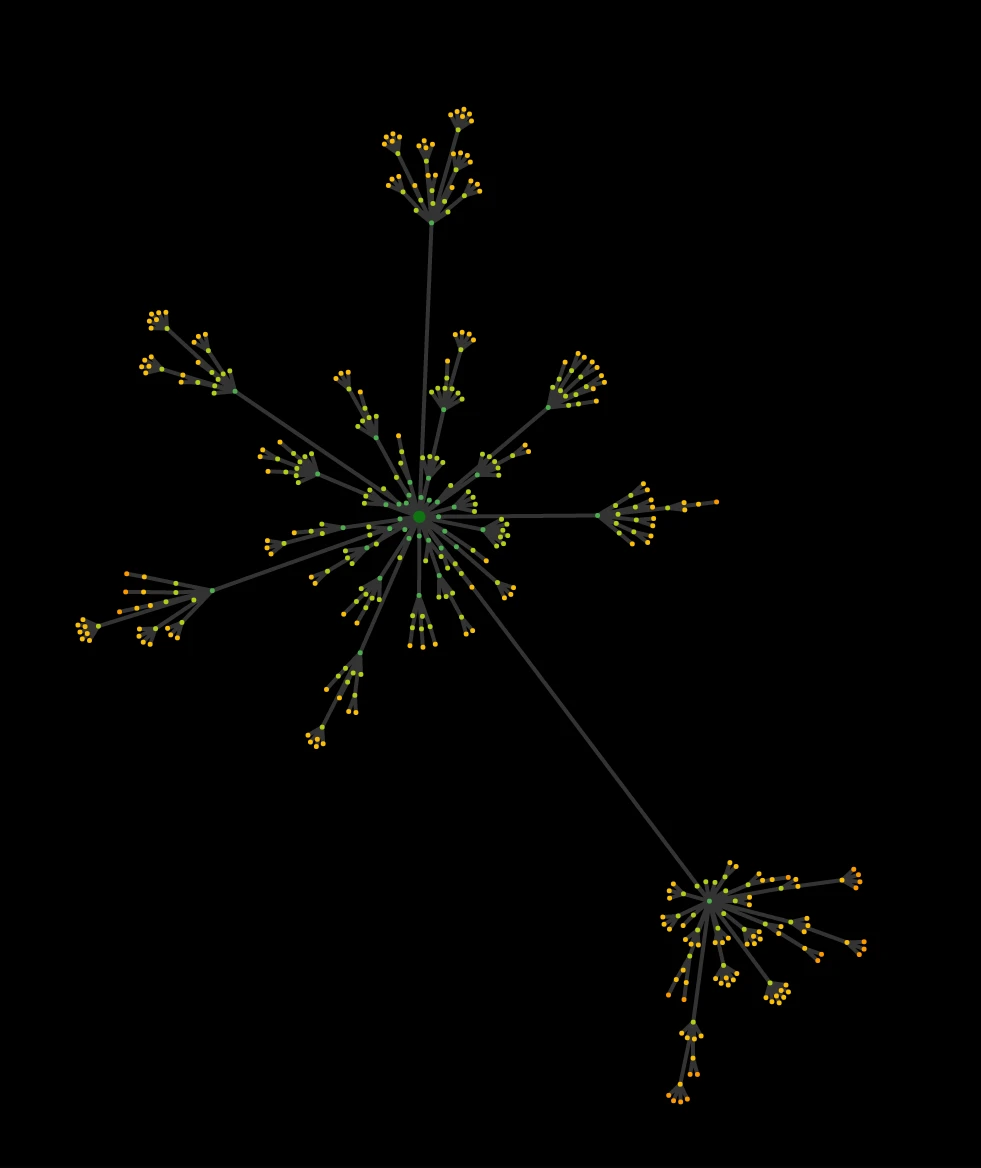
You can see the site is organized around content hubs. That’s good for SEO. Related content is linked together under categories, and there is good internal linking to move the Page Authority between related content.
Your content hubs are generally linked to your URL structure.
5. Improve Your Site Speed
The site speed is a vital thing to consider in your technical SEO checklist. There is a clear correlation between site speed and user experience. Firstly, the faster your site loads, the fewer people are likely to leave your site. That means more people are likely to buy stuff through your site.
The graph below nicely shows the correlation between page load time and conversions.

Source: Econsultancy
According to a study, a delay of even one second can hurt your conversion rates by 7%. In an age when the competition is intense and the attention span limited, every second takes a little away from the user experience.
Google has said that a user’s page experience is a ranking factor.
“We will introduce a new signal that combines Core Web Vitals with our existing signals for page experience to provide a holistic picture of the quality of a user’s experience on a web page.”
Here’s the nice graphic they provided on the page that reveals the Core Web Vitals.
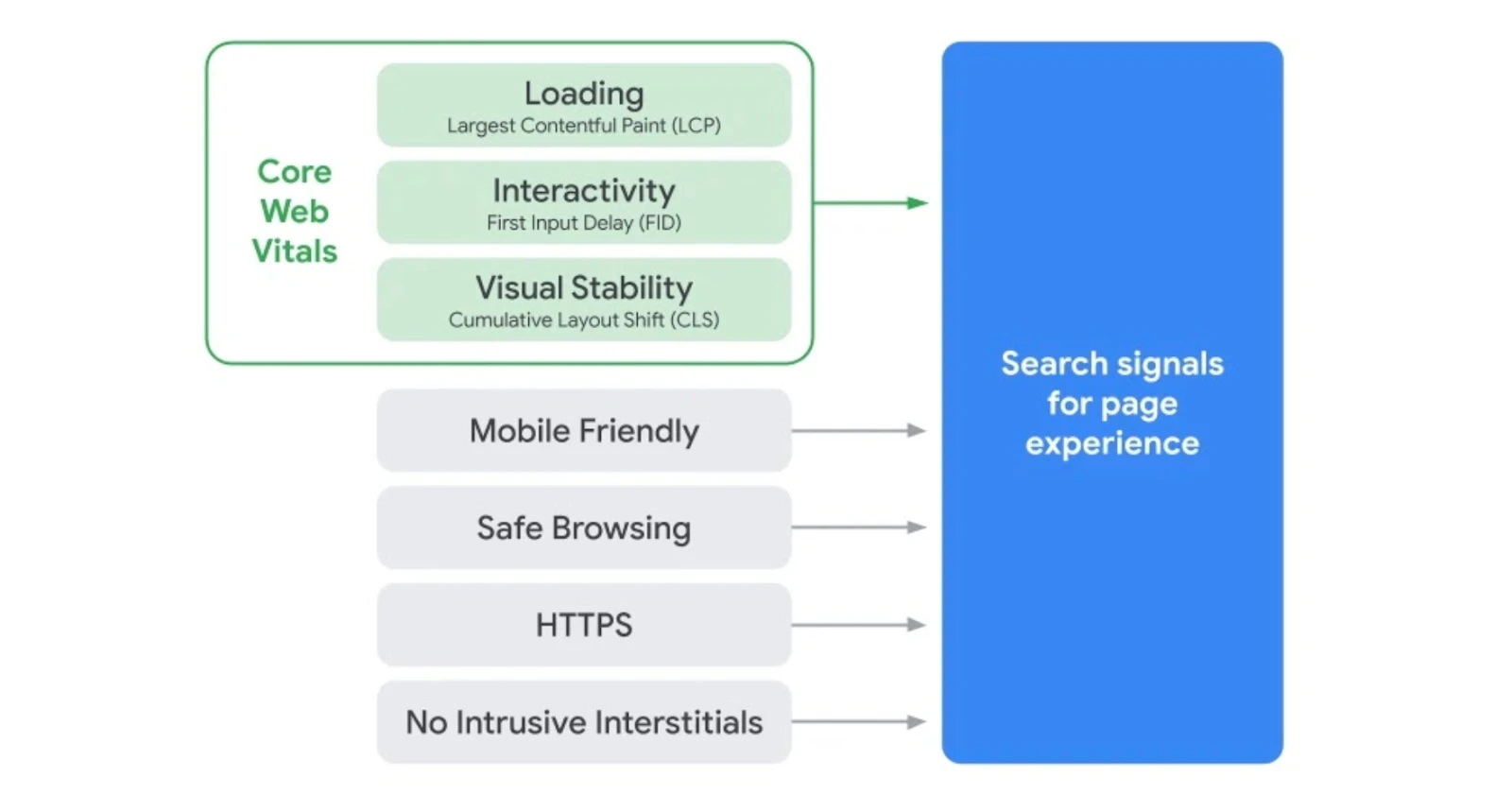
Source: Google Developers Blog
There are plenty of great online tools available out there that you can use to identify issues with website speed. For example, there is PageSpeed Insights, which is a free tool from Google.
You can use PageSpeed Insights to review your site speed on desktop and mobile. An alternative to PageSpeed Insights is GTmetrix. The tool does more or less the same thing as PageSpeed Insights.
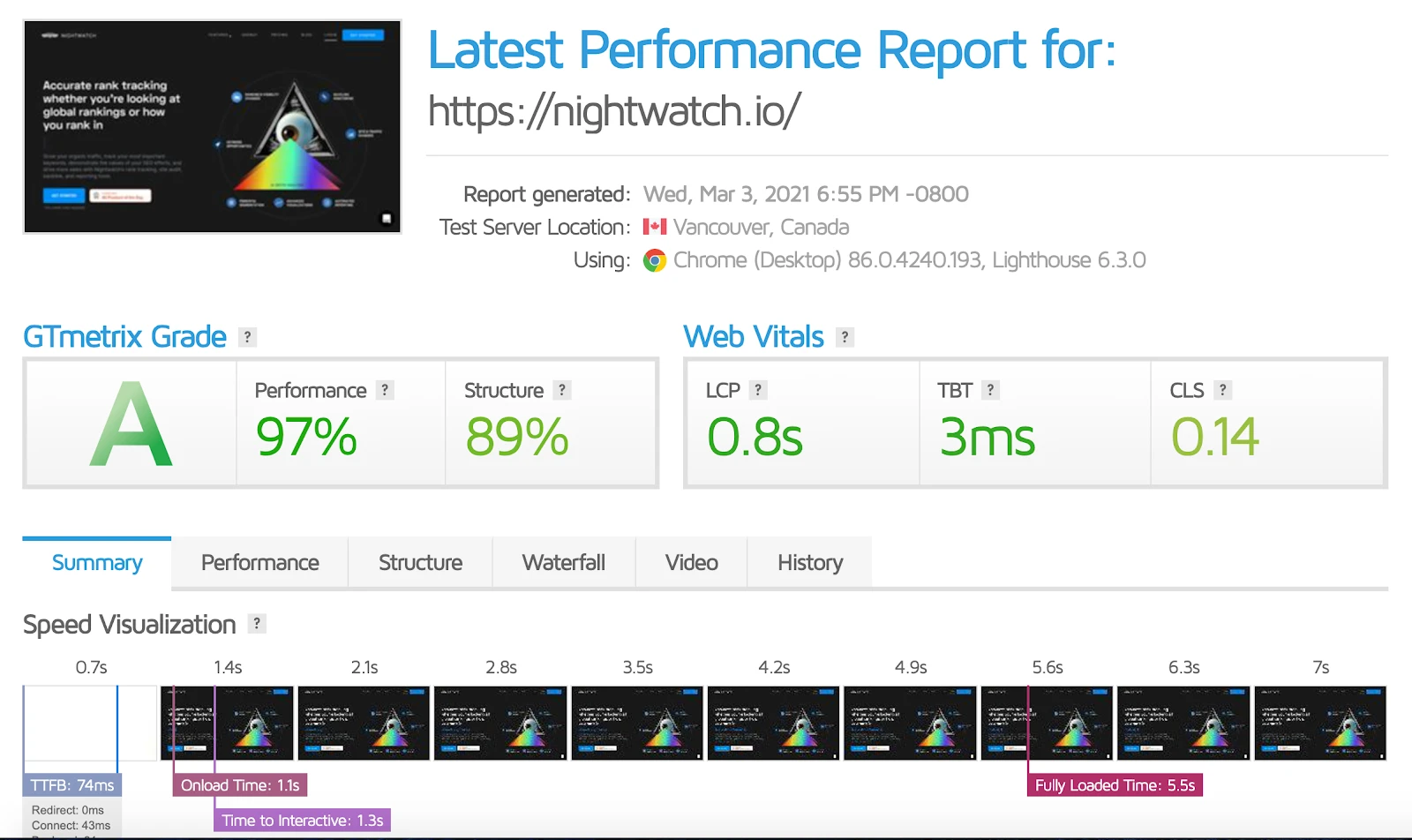
The first tab provides you with a website grade and a summary of the results.
You can press on the other tabs to get more detailed insights. It’s a great free tool for analyzing page speed. You can hire a developer to implement the fixes if you’re unsure how to make the changes yourself—for example, improving server response times, which is quite technical.
6. Optimize for Mobile Devices
In July 2019, Google stated that it would start mobile-first indexing. It means that Google will use the mobile version of the content for indexing and ranking.
Most modern websites, especially website themes, are optimized for desktop. Your website is probably also mobile responsive. However, there’s a chance that your website is not optimized for mobile.
Let me use Hubspot as an example.
Below is a screenshot of the PageSpeed results of Hubspot for mobile.
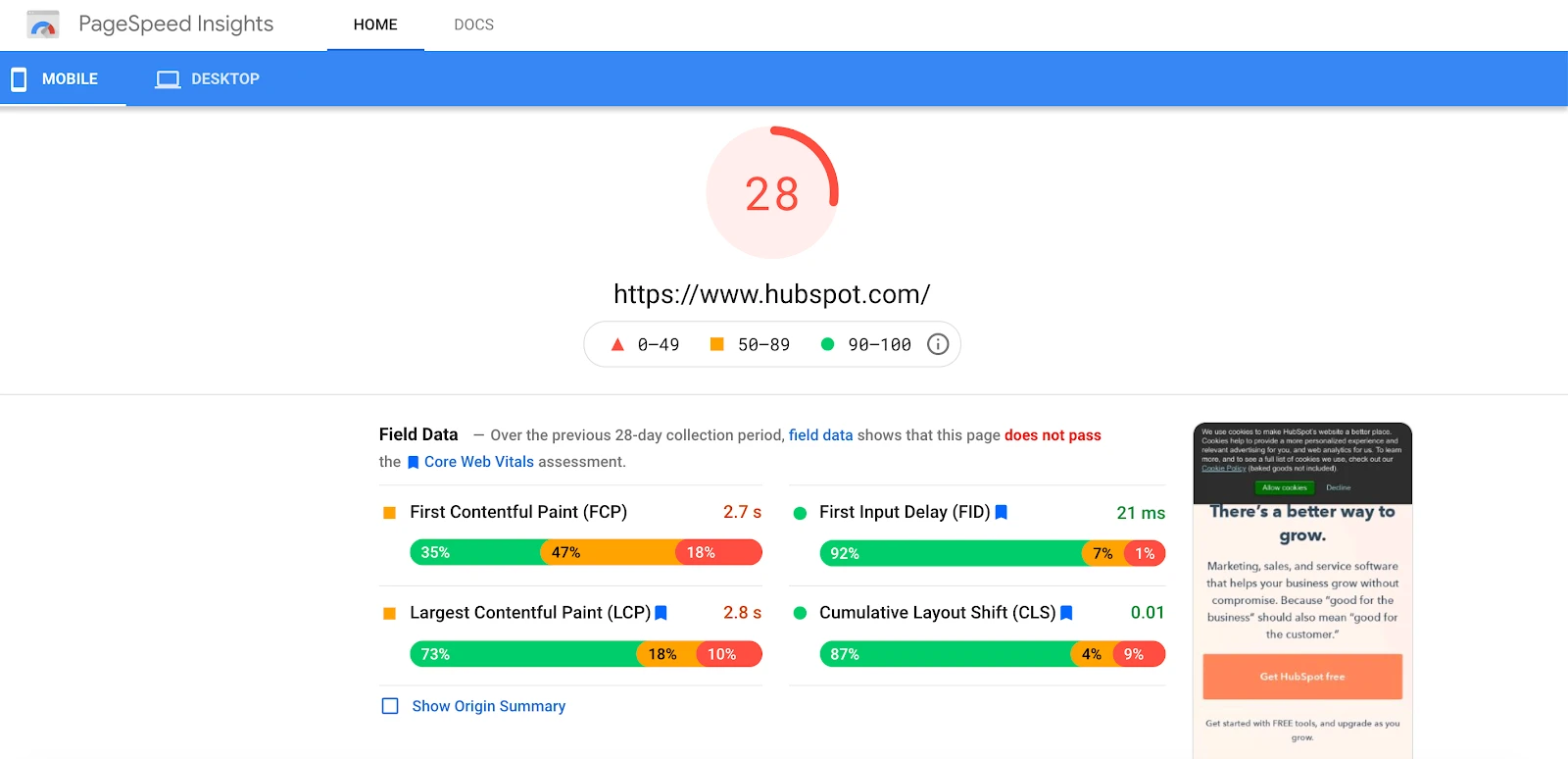
That grade is out of 100. So, 28 is pretty poor.
The image below reveals their result for Desktop.

That’s a far better result.
Hubspot provides a nice illustration of the issues you’ll need to review when optimizing your website for mobile. It’s not just about the responsiveness of your website, though that’s an important factor.
7. Check for Duplicate Versions
Having duplicate content on your website can harm your SEO rankings. Unfortunately, duplicate content is a problem that many sites experience.
You might not be aware that you have duplicate content on your website. It is often the result of an incorrectly set up web server. For example, you might have duplicate content with non www vs www and HTTP vs HTTPS, trailing slash, etc.
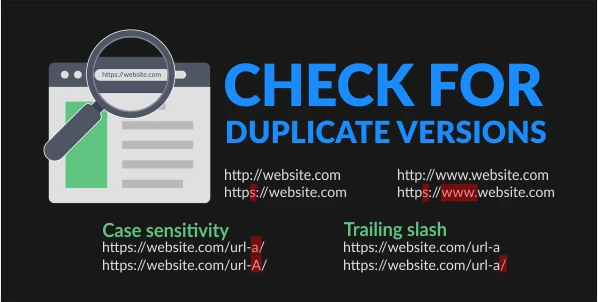
The common fixes to duplicate content include 301 redirects, canonical URL, and no-index. The appropriate solution will depend on the problem.
In Closing
If you want your website to rank in the search results, you need to ensure your site is optimized for Google. In this guide, I provided a technical SEO checklist. I tried to make this guide insightful and actionable. I shared relevant tools you could use to implement fixes.
The basics of technical SEO are quite straightforward. Focus on user experience. Ensure your website loads fast, you have HTTPS enabled, and your website is optimized for mobile.
You should also review your website structure. Make sure your content is logically organized, and you group things thematically into content silos. Then, ensure that the links on your website work and remove duplicate versions of your content.
If you follow all the tips I shared in this guide, I expect you’ll see a small bump in your search rankings—best of luck implementing these suggestions.
About the Author
Matt Diggity is a search engine optimization expert and the founder and CEO of Diggity Marketing, The Search Initiative, Authority Builders, and LeadSpring LLC. He is also the host of the Chiang Mai SEO Conference.
